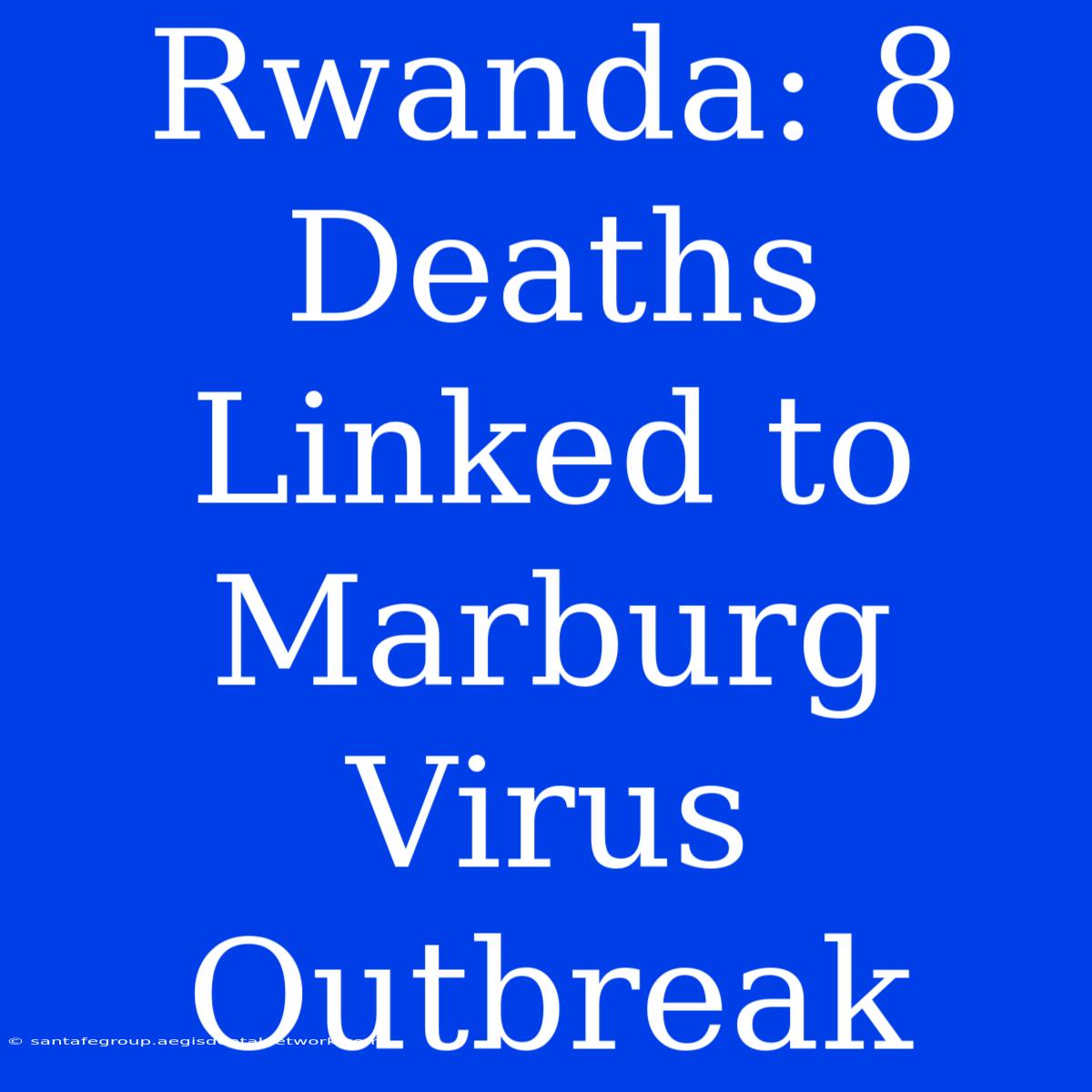Rwanda: 8 Deaths Linked to Marburg Virus Outbreak - A Worrying Development
Is the Marburg virus outbreak in Rwanda a serious threat? The recent outbreak of Marburg virus disease in Rwanda, linked to eight deaths, raises concerns about the potential for a wider spread. This highly contagious and deadly disease, a close relative of Ebola, poses a serious threat to public health.
Editor's Note: The Marburg virus outbreak in Rwanda is a pressing public health concern. Understanding the virus, its transmission, and preventive measures is crucial for addressing this threat.
This topic is important to read because it highlights the vulnerability of populations to emerging infectious diseases, the need for robust surveillance systems, and the importance of swift and effective public health responses.
Our analysis: We have carefully reviewed official statements from the World Health Organization (WHO) and the Rwandan Ministry of Health, analyzed recent scientific publications on Marburg virus disease, and consulted with experts in infectious diseases.
Key Takeaways:
| Key Area | Description |
|---|---|
| Virus Transmission | Primarily through direct contact with infected bodily fluids or contaminated materials |
| Symptoms | Fever, headache, muscle aches, fatigue, vomiting, diarrhea, and bleeding |
| Mortality Rate | High, with case fatality rates ranging from 24% to 88% |
| Treatment | Currently no specific treatment or vaccine for Marburg virus disease |
Marburg Virus Disease
Introduction: Marburg virus disease (MVD) is a severe, often fatal hemorrhagic fever caused by the Marburg virus. It is named after the German city where the first outbreak was identified in 1967.
Key Aspects:
- Transmission: Primarily through contact with infected individuals' bodily fluids, such as blood, saliva, vomit, and urine. Contact with contaminated materials, like needles, bedding, or clothing, can also lead to infection.
- Symptoms: The initial symptoms are non-specific, including fever, headache, muscle aches, fatigue, and vomiting. These are followed by more severe symptoms, such as diarrhea, abdominal pain, and bleeding.
- Diagnosis: Diagnosis is typically made by laboratory testing, such as PCR or antibody tests, to confirm the presence of the virus.
- Treatment: Currently, no specific treatment or vaccine is available for MVD. Supportive care, such as rehydration, blood transfusions, and managing complications, is essential.
Public Health Response
Introduction: The Rwandan Ministry of Health and the WHO are working closely together to contain the outbreak. This involves implementing public health measures to prevent further spread and provide care to those affected.
Key Aspects:
- Surveillance and Contact Tracing: Active surveillance is being conducted to identify potential cases, and contact tracing is being implemented to identify and monitor individuals who have come into contact with infected persons.
- Isolation and Treatment: Confirmed cases are being isolated in designated treatment centers to prevent further transmission.
- Public Education: Public awareness campaigns are being conducted to inform the population about MVD, its symptoms, and preventative measures.
- Community Engagement: Collaboration with communities is crucial to ensure trust and facilitate the implementation of public health measures.
Conclusion
The Marburg virus outbreak in Rwanda is a concerning development. While the authorities are working to contain the outbreak, the highly contagious nature of the virus and the lack of specific treatment options underscore the importance of vigilance and robust public health measures. Continuous surveillance, swift detection, and effective public health response are critical to minimize the impact of this deadly disease.
FAQ
Q: What are the symptoms of Marburg virus disease?
A: The initial symptoms include fever, headache, muscle aches, fatigue, and vomiting. These are followed by more severe symptoms like diarrhea, abdominal pain, and bleeding.
Q: How is Marburg virus disease transmitted?
A: Primarily through contact with infected individuals' bodily fluids, such as blood, saliva, vomit, and urine. Contact with contaminated materials, like needles, bedding, or clothing, can also lead to infection.
Q: Is there a vaccine or treatment for Marburg virus disease?
**A: ** Currently, no specific treatment or vaccine is available for MVD. Supportive care, such as rehydration, blood transfusions, and managing complications, is essential.
Q: What should I do if I think I might have Marburg virus disease?
A: Immediately seek medical attention and inform healthcare providers about your recent travel history and potential exposure.
Q: How can I protect myself from Marburg virus disease?
A: Avoid contact with infected individuals or their bodily fluids. Practice good hygiene, such as washing your hands regularly, and wear protective gear when handling potentially contaminated materials.
Tips
- Stay informed about the situation by following official sources like the WHO and the Rwandan Ministry of Health.
- Avoid contact with infected individuals or their bodily fluids.
- Practice good hygiene, such as washing your hands regularly and using hand sanitizer.
- Wear protective gear, such as gloves and masks, when handling potentially contaminated materials.
- Seek medical attention immediately if you experience symptoms of MVD.
Summary
The Marburg virus outbreak in Rwanda is a significant public health concern. Understanding the virus, its transmission, and preventative measures is crucial for addressing this threat. The authorities are working to contain the outbreak, but the high mortality rate and the lack of specific treatment options highlight the importance of vigilance and a robust public health response.
Closing Message
The Marburg virus outbreak in Rwanda serves as a stark reminder of the vulnerability of populations to emerging infectious diseases. It emphasizes the need for robust surveillance systems and swift, effective public health responses to minimize the impact of such outbreaks. Continuous monitoring, proactive prevention, and collaborative action are essential to protect public health and prevent the spread of deadly diseases.

